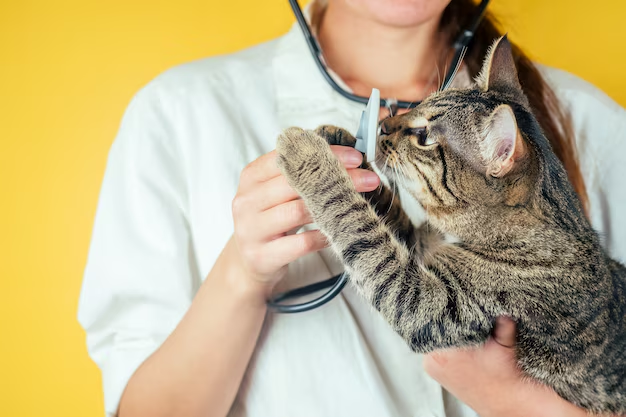Is Feline Leukemia a Contagious Threat to Your Cat?
Imagine bringing a friendly new feline into your home, and with it comes an unwelcome visitor. Feline Leukemia Virus (FeLV) is one of those guests that no pet owner wants to harbor. This topic often perplexes many, especially when it comes to understanding its contagious nature. Let’s dive into what makes FeLV a concern for pet owners and how you can manage its risks.
Understanding Feline Leukemia Virus (FeLV)
Feline Leukemia Virus is a viral infection that affects cats. It's one of the most common infectious diseases in cats, and it's crucial to understand both the science behind it and its implications for your furry friend.
What Is FeLV?
FeLV is a retrovirus that impacts a cat’s immune system, leaving it vulnerable to infections and certain types of cancer. It's akin to a silent predator, gradually weakening the host without visible symptoms until it's too late.
How Does FeLV Affect Cats?
Cats infected with FeLV can experience a range of health issues, including:
- Anaemia: A deficiency of red blood cells.
- Immunosuppression: Increased susceptibility to infections.
- Lymphoma: A type of cancer affecting the lymphatic system.
Most concerning is that many FeLV-positive cats may not show symptoms initially, leading to a state of hidden danger.
Is Feline Leukemia Contagious?
Yes, FeLV is contagious, primarily spreading through close contact among cats. However, understanding how it's transmitted can help in mitigating its spread.
Transmission
FeLV primarily spreads via:
- Saliva: Sharing dishes or mutual grooming.
- Nasal secretions: Sneezing can disperse the virus.
- Urine and feces: Litter boxes can become a source.
- Blood: Bites from infected cats.
- Mother to kitten: During birth or nursing.
Interestingly, casual contact like being in the same room is generally not a cause for concern. The virus is relatively fragile outside the host.
Risk Factors for Transmission
- Outdoor access: Outdoor cats are more exposed to infected cats.
- Multiple cat households: Increased chance of close contact with an infected feline.
- Community Cats: Stray or feral cats play a significant role in spreading the virus.
Diagnosing Feline Leukemia
Since FeLV can lurk unnoticed, diagnosing it involves some key tests.
Veterinary Tests
Two main tests used for diagnosing FeLV are:
- ELISA (Enzyme-Linked Immunosorbent Assay): This test detects viral proteins in the blood and is effective for early detection.
- IFA (Indirect Immunofluorescent Antibody Assay): This test generally confirms an ELISA result and assesses the stage of infection.
Regular screening is essential for early detection, especially if your cat falls into a higher risk category.
Protecting Your Cat from FeLV
There are several strategies you can adopt to minimize the risk of FeLV for your feline companion.
Vaccination
Vaccinating your cat against FeLV is an effective way to protect them from infection. While no vaccine is 100% effective, it significantly reduces the risk.
Indoor Living
Maintaining an indoor lifestyle for your cat drastically reduces the chance of coming into contact with infected felines, potentially saving them from exposure to FeLV.
Regular Veterinary Visits
Routine veterinary check-ups allow for early detection and prevention strategies to be implemented in a timely manner.
Quarantine New Cats
If you’re introducing a new cat to your household, quarantine and test them first to ensure they are FeLV-free before mingling with other cats.
Caring for a Feline with FeLV
Learning that your cat has FeLV is undoubtedly distressing, but understanding how to care for them is vital.
Nutrition and Care
FeLV-positive cats should receive optimal care, including:
- High-quality nutrition: Supports their immune system.
- Stress-free environment: Reduces secondary infections.
- Prompt treatment: For any secondary infections to avoid escalation.
Regular Health Monitoring
Frequent health monitoring allows for the early detection of complications and gives your cat a better quality of life.
Common Misconceptions and Concerns
When it comes to FeLV, misconceptions can lead to poor decision-making.
Myth: FeLV Can Affect Humans
This virus is feline-specific and cannot be transmitted to humans or other non-feline pets.
Myth: Euthanasia Is the Only Option
While FeLV is serious, affected cats can live full lives with appropriate care and monitoring. Many FeLV-positive cats don’t exhibit severe symptoms for several years, allowing families to enjoy their companionship.
Final Thoughts: Staying Informed
Educating yourself about Feline Leukemia Virus and understanding the nuances of its transmission can provide peace of mind and pragmatic approaches to managing your cat's health. The goal is to empower cat owners with knowledge, helping them to navigate this challenge effectively while also offering a harmonious life for their cats, whether they are FeLV positive or not.
Key Takeaways on Feline Leukemia 🎯
- Contagiousness: FeLV spreads primarily through saliva, nasal secretions, and close contact with infected cats. 🐾
- Protection: Vaccination and restricting outdoor access significantly reduce the risk of infection. 💉
- Regular Testing: Essential for early detection and peace of mind. 🔍
- Human Safety: FeLV is not a threat to humans or non-feline pets. 🙅♂️
- Quality of Life: With care, FeLV-positive cats can still lead fulfilling lives. ❤️
Empower yourself with information, and make informed decisions to keep your feline friend healthy and happy!

Related Articles
- Can Leukemia Be Cured
- How Do Cats Get Feline Leukemia
- How Do They Test For Leukemia
- How Do You Get Leukemia
- How Do You Test For Leukemia
- How High Are Monocytes In Leukemia
- How Is Feline Leukemia Spread
- How Is Feline Leukemia Transmitted
- How Is Leukemia Diagnosed
- How Long Can You Live With Chronic Lymphocytic Leukemia